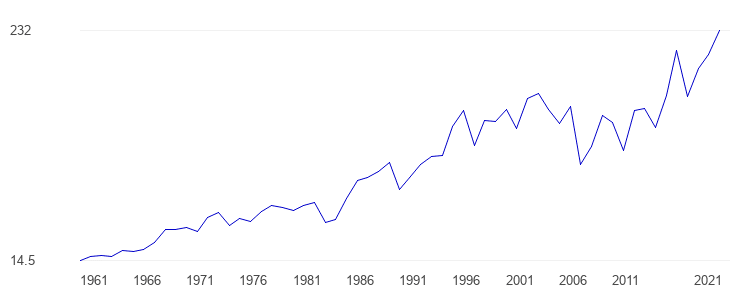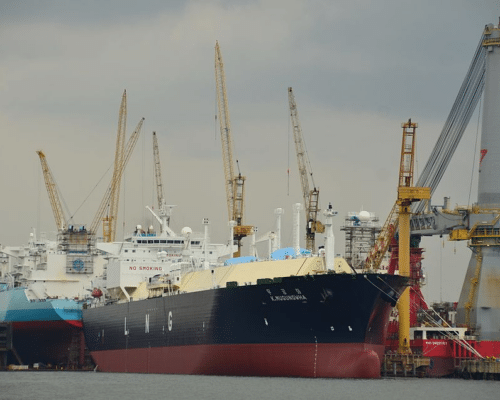Water Pollution in the Philippines: Causes and Solutions
Source: UNEP
20 June 2024 – by Eric Koons
Water pollution in the Philippines is a critical issue affecting the nation’s health, economy and environment. The Philippines has 421 primary rivers and 221 lakes, which supply 50% of the country’s potable water. The remaining 50% comes from groundwater sources. These water resources are critical for the country’s drinking water, agriculture and industry.
Causes of Water Pollution in the Philippines
The Philippines is facing the dire challenge of water pollution. Rapid urbanisation and industrial development are the main causes that have led to the dumping of untreated sewage and waste into rivers and oceans. The lack of proper waste management systems exacerbates the problem, as trash and plastic waste accumulate in water bodies, endangering aquatic life.
What Is the State of Water in the Philippines?
The Philippines’ water availability and quality are alarming. 43% of the country’s rivers and 56% of the country’s major water bodies are polluted.
While 91% of households have access to basic water services, access is unequal, with some regions having access as low as 62%. Furthermore, 52% of households lack access to a safely managed water supply. Polluted drinking water led to an average of around 50,000 cases of waterborne diseases annually between 2010 and 2019.

Furthermore, the country’s oceans are in a similar state. The Philippines is the world’s leading ocean plastic polluter, contributing 36% of the world’s total ocean plastic pollution annually. This equates to an average of 3.3 kg of plastic per person.
Water Pollution in the Philippines 2024
The Philippines has several significant issues leading to its water pollution problems. These are primarily industrial discharge, agricultural runoff and inadequate domestic sewage treatment.
Industrial Pollution
Industrial pollution accounts for 24% of the country’s water pollution. There are over 820,000 industrial facilities in the Philippines, 60% of which are within the Manila Bay Metro Region. Industrial activities often release pollutants like heavy metals, oils, solid waste, industrial wastewater and hazardous chemicals. These compounds can be highly toxic and bioaccumulate in animals, further increasing their risk of entering humans.
Agricultural Pollution
Agricultural pollution accounts for 37% of the country’s water pollution, primarily from animal waste and pesticide and fertiliser runoff. This is largely the result of the country’s rapid increase in pesticide and fertiliser use, which has increased in the country. Between 1961 and 2005, fertiliser usage increased by 1,000%, and in the decade between 1977 and 1987, pesticide usage went up by 325%.

These contaminants are largely toxic to humans in both chronic and acute exposure. Additionally, fertiliser runoff can lead to eutrophication, causing harmful algal blooms that deplete oxygen in the water and harm aquatic life.
Domestic Sewage Pollution
Only 10% of domestic wastewater is treated, and only 5% of the population is connected to a sewer network. This leaves the remaining 95% of the population reliant on septic tanks, pit latrines or with no management for sewage waste. Untreated sewage that enters the water supply can carry waterborne diseases like cholera, typhoid, dysentery, and hepatitis. More awareness regarding improved sanitation services is needed.
Impact of Water Pollution in the Philippines
Water pollution in the Philippines has far-reaching consequences. Health impacts are severe, with waterborne diseases being common in areas with poor water quality. They are among the country’s top 10 factors leading to disease and death.
The economic effects of water pollution are equally concerning. Due to the impact of water-related diseases and contamination, healthcare costs increase and worker productivity declines. These two factors account for USD 7 billion in annual economic losses.
Furthermore, industries that rely on clean water also face economic challenges. Environmental repercussions include the degradation of aquatic ecosystems and loss of biodiversity. Polluted waters harm fish populations, reduce biodiversity and disrupt ecosystems. This environmental degradation directly impacts the tourism and fishing industry. With tourism accounting for 6.2% and fisheries 1.3% of the country’s GDP, declines in either sector have a significant impact on communities across the country.
Improving Philippines’ Water Quality
Water quality issues in the Philippines are multifaceted and require a large-scale strategy. The primary regulation to mitigate water pollution is the Clean Water Act of 2004, which sets water quality management areas, water quality guidelines and general effluent standards. However, enforcement of the regulation is often weak due to limited resources and local enforcement. Strengthening the enforcement mechanisms by increasing funding for regulatory bodies and increasing penalties, as well as environmental taxes, for noncompliance can deter industries from polluting.
Furthermore, expanding the existing sewer system and sewage treatment infrastructure can eliminate domestic sewage pollution at the source. Projects like the Pasig River Rehabilitation Commission have shown progress, but more extensive and sustained efforts are needed for long-term improvements.
Public awareness and community involvement are also crucial. Education campaigns can inform citizens about the impacts of water pollution and encourage responsible behaviours. For example, community-based monitoring programs can empower local communities to actively protect their water resources. The Philippine Department of Environment and Natural Resources (DENR) has initiated programs like the Adopt-an-Estero/Waterbody Programme, which involves public-private partnerships to clean and rehabilitate water bodies.
Overall, stricter enforcement, infrastructure investment and public involvement are key to reducing water pollution in the Philippines.
by Eric Koons
Eric is a passionate environmental advocate that believes renewable energy is a key piece in meeting the world’s growing energy demands. He received an environmental science degree from the University of California and has worked to promote environmentally and socially sustainable practices since. Eric’s expertise extends across the environmental field, yet he maintains a strong focus on renewable energy. His work has been featured by leading environmental organizations, such as World Resources Institute and Hitachi ABB Power Grids.
Read more







